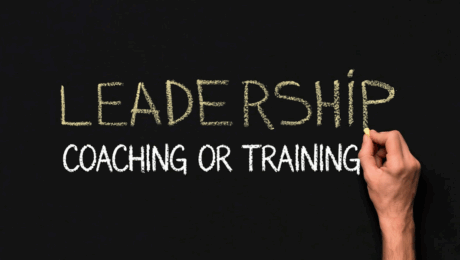As an HR leader, you’re the catalyst for positive change. However, even the most brilliant HR initiatives can falter without proper buy-in. At SparkEffect, we understand the art of transforming skepticism into enthusiastic support. Let’s explore how you can confidently secure buy-in for your HR programs, fostering courage and momentum throughout your organization.
1. Craft a Magnetic ‘Why’ to Inspire Action
Cultivate enthusiasm by crafting a narrative that resonates deeply with stakeholders:
- Weave your initiative into the fabric of the company’s mission and individual aspirations.
- Paint a vivid picture of the positive outcomes, bringing the benefits to life in tangible ways.
- Tailor your message to address the unique concerns and motivations of different groups.
Example: When introducing a new leadership development program, move beyond simply highlighting skills acquisition. Illustrate how it will empower managers to build high-performing teams, accelerate their career growth, and elevate their contributions to the company’s success. Create a compelling vision of how this program will transform not just individual leaders, but the entire organizational culture, fostering innovation and driving sustainable growth.
2. Leverage Data to Build a Persuasive Case
Let data be the foundation of your persuasion strategy:
- Conduct thorough analysis to identify pain points your initiative addresses.
- Use predictive analytics to forecast potential ROI and positive outcomes.
- Present data in a clear, compelling manner that speaks to decision-makers.
Example: Before proposing a wellness program, gather data on current health-related costs, productivity losses, and employee satisfaction. Use this to project potential savings and improvements, making a strong business case.
3. Engage Influencers as Change Champions
Create a network of advocates who amplify your message:
- Identify respected individuals at all levels of the organization.
- Provide them with in-depth information and empower them to spread enthusiasm.
- Create a formal “HR Initiative Ambassador” program to recognize their role.
Example: For a new performance management system, recruit high-performing managers from various departments as early adopters. Their positive experiences and advocacy can significantly influence their peers.
4. Demonstrate Early Wins with Pilot Programs
Build confidence through tangible results:
- Start with a small-scale pilot of your initiative.
- Gather and showcase positive outcomes and testimonials.
- Use these early successes to build momentum for wider implementation.
Example: Before rolling out a company-wide mentoring program, run a pilot with a single department. Use the success stories and lessons learned to gain support for expansion.
5. Tailor Your Approach to Different Stakeholders
Recognize that different groups have unique concerns and priorities:
- Develop stakeholder personas to understand various perspectives.
- Craft tailored messages that address specific “What’s in it for me?” for each group.
- Use the most effective communication channels for each stakeholder.
Example: When presenting a new learning management system, focus on cost-efficiency and talent development for executives while highlighting ease of use and career growth opportunities for employees.
6. Create Immersive Experiences
Allow stakeholders to experience the benefits firsthand:
- Develop interactive demonstrations or simulations of your initiative.
- Offer “day in the life” scenarios that showcase the positive impact.
- Use virtual reality or other tech to create engaging, memorable presentations.
Example: For a new flexible work policy, create a virtual simulation that allows managers to experience how it could improve team productivity and work-life balance.
7. Address Concerns Proactively
Build trust by acknowledging and addressing potential objections:
- Conduct focus groups to uncover concerns before a full presentation.
- Develop a comprehensive FAQ that addresses common worries.
- Be transparent about challenges and your plans to overcome them.
Example: When introducing a new HRIS, acknowledge the learning curve and showcase your robust training plan and ongoing support strategy.
Related blog post from SparkEffect:
Navigating the Maze: HR Leaders Pathway to Overcoming Organizational Transformation Pitfalls
8. Align with Other Business Initiatives
Demonstrate how your HR initiative supports broader organizational goals:
- Connect your program to current strategic priorities.
- Show how it complements or enhances other ongoing initiatives.
- Highlight cross-functional benefits to gain wider support.
Example: Link your proposed leadership development program to the company’s expansion plans, showing how it will prepare leaders to manage larger, more diverse teams.
9. Leverage External Validation
Use outside expertise, like SparkEffect, to bolster your case:
- Share case studies from similar organizations that have succeeded with similar initiatives.
- Bring in industry experts to speak to the importance and potential impact of your program.
- Reference relevant research and industry trends that support your initiative.
Example: When proposing a diversity and inclusion program, share studies showing the positive impact on innovation and financial performance in peer companies.
10. Create a Clear Implementation Roadmap
Build confidence in your ability to execute:
- Develop a detailed, phased implementation plan.
- Clearly outline required resources, timelines, and milestones.
- Show how you’ll measure success and make adjustments along the way.
Example: For a new employee engagement strategy, present a 12-month roadmap with clear phases, from initial survey to program launch, with defined success metrics at each stage.
Empowering Your HR Vision: Partner with SparkEffect for Transformative Success
At SparkEffect, we believe in your power to drive meaningful change through impactful HR initiatives. By implementing these strategies, you’re not just seeking approval; you’re igniting enthusiasm and commitment across your organization. Remember, gaining buy-in is an ongoing process that requires empathy, adaptability, and clear communication.
Are you ready to transform skepticism into enthusiastic support for your HR initiatives? Let’s champion this journey together. Reach out to SparkEffect today, and let’s craft a tailored strategy that will illuminate the value of your initiatives and guide your organization confidently into a brighter future.







